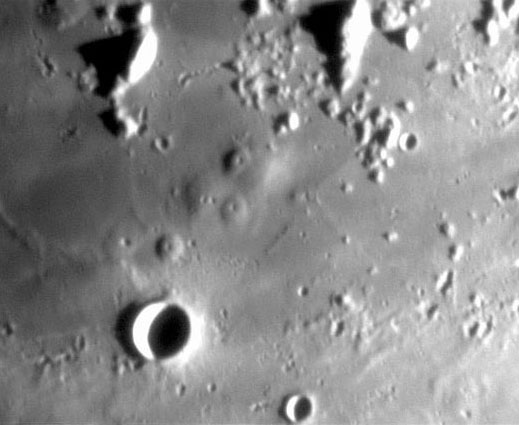March 26, 2004
Six Little Volcanoes
Image Credit: Bruno Daversin |
|
Six Little Volcanoes Volcanism on the Moon is completely dominated by mare basalts, mostly in the form of vast sheets of lava flows that create the maria. Sitting on top of mare lavas in some places are 5-20 km wide blisters or domes, some with summit pits. These six domes, 6 to 8 km wide, and just north of the crater Hortensius are famous examples. A recent study demonstrated that the surface composition of the domes is the same as the the surrounding mare. Based on comparisons with terrestrial volcanism the domes are probably formed when mare basalts erupt at a lower rate and from a central vent. Two major scientific questions are why do dome lavas erupt more slowly than normal mare flow lavas, and why from a central vent? Possible answers are that the pressure to drive an eruption depends on the size and depth of the magma chamber that feeds the domes. Smaller and near surface chambers cause less pressure and hence produce lower flow rates. As for the central vent, terrestrial observations show that many eruptions start from a long fissure but that one area usually becomes the main vent and the rest of the fissure dies. Both the low eruption rate and concentration of flow from a central vent are consistent with small isolated magma chambers. In lunar mare regions, magma rose directly from the mantle and voluminously erupted from long fissures, creating flows hundreds of kilometers long. For some reason, in some places, magma collected in near surface chambers and fed shorter, slower moving flows that built domes. Why? Technical Details: Related Links: Yesterday's LPOD: Russian Gores Tomorrow's LPOD: LTO |
|
Author & Editor: |
COMMENTS?
Register, and click on the Discussion tab at the top of the page.
Contributions to http://www2.lpod.org/ are licensed under a Creative Commons Attribution No-Derivative-Works Non-Commercial 3.0 License. 




